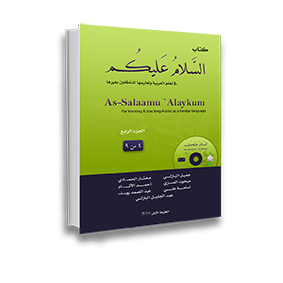After completing this textbook, the learners will be able to:
1. Talk about concrete issues from the culture of Arabic language such as: popular markets, foods, political regimes, Arab tribes, Arabic music, emigration, religious and national occasions, welfares, and comparing these issues with such ones from the learner’s culture.
2. Extract main ideas, and specific information from the short reading texts.
3. Comprehend and understand the texts that they hear, answer the exercises, and express their points of views.
4. Express orally and in written forms their opinions, points of views of likes and dislikes of foods, experiences, housing, and daily activities.
5. Master the 10 forms of verbs, compare these 10 forms with one another, comprehend and use properly the derived gerund, present participle, and past participle. Besides, they master the passive forms in past and present.
6. Comprehend and use correctly tenses (past, present), the imperative form of the verb, prepositions, genitive structure, nominal sentence (subject, and predicate), and verbal sentence (verb, subject, object, intransitive and transitive verbs).
7. Use properly main punctuation in their writings, and distinguish between nouns, and adjectives.
8. Practice writing simple paragraphs in different styles.
9. Practice writing letters of invitation and congratulation, postcards, and informal letters.
10. Express orally and in written personal impressions, opinions, complaints, and daily experiences.
11. Exercise learning strategies such as: a) collecting information of the learnt topics from their main sources, then summarizing such information, preparing PowerPoint presentations to present in the classroom orally, b) conducting oral interviews with locals and recording them in order to listen to them several times, and c) enjoying Arabic language through Arabic calligraphy, Qura’anic recitations, and music.

